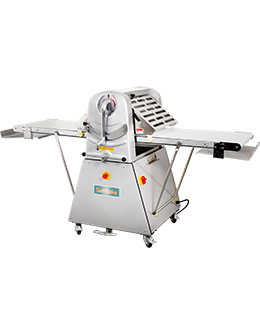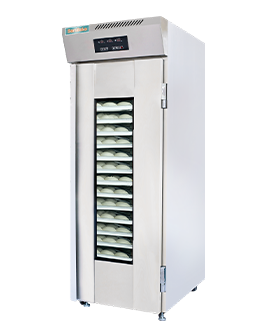Dough Proofer

Introduction
🧪 Understanding the Dough Proofing Process
The Role of Yeast and Fermentation
Yeast isn’t just an ingredient—it's a living organism. When added to dough, it eats the sugars and releases carbon dioxide, which causes the dough to expand. This process is called fermentation, and it's key to creating that airy texture and deep flavor we love in breads and pastries.
Temperature and Humidity: The Science Behind the Rise
Yeast thrives in a warm, moist environment—typically around 85°F (29°C) with high humidity (around 75–90%). Too hot, and the yeast dies. Too cold, and fermentation slows. This is where a dough proofer shines—it gives your dough the perfect spa day.
🧺 Types of Dough Proofers
Countertop Dough Proofers
These compact units are perfect for small bakeries or home bakers. They fit comfortably on work surfaces and are easy to use. Most have basic temperature and humidity controls.
Floor-Standing Commercial Proofers
Larger and more powerful, these are designed for high-volume operations. Many can hold multiple trays or full racks of dough. Ideal for commercial bakeries.
Retarder Proofers (Retard/Proof Units)
This hybrid model allows bakers to delay the fermentation (retarding) with refrigeration, and then automatically shift to proofing mode. They're great for overnight baking schedules.
DIY/Home Bread Proofers
For the budget-conscious or hobby baker, a DIY setup with a box, towel, and bowl of hot water might do the trick. But if you want control and consistency, a small electric proofer is better.
⚙️ Key Features to Look For in a Dough Proofer
Temperature Control
Precise temperature regulation ensures yeast doesn’t underperform or overproof. Look for units with digital thermostats.
Humidity Regulation
This is essential to prevent the dough from drying out. A good dough proofer will have a water pan or steam generator.
Size and Capacity
How much dough are you proofing daily? Choose your size based on whether you’re baking a few loaves or hundreds.
Programmable Settings
Timers, programmable cycles, and memory functions are super helpful, especially for overnight or batch baking.
✅ Benefits of Using a Dough Proofer
Consistency in Results
With a dough proofer, every batch rises under the same conditions—no surprises.
Time-Saving for Bakers
No more waiting hours for dough to rise in cold kitchens. The proofer speeds things up without cutting corners.
Enhanced Flavor and Texture
Perfect fermentation develops gluten and flavor. You get better volume, chew, and crust.
👨🍳 How to Use a Dough Proofer
-
Set the desired temperature and humidity.
-
Place your dough inside on trays or racks.
-
Close the door to lock in the environment.
-
Let it rise until doubled in size or recipe-ready.
Common Mistakes to Avoid
-
Overproofing your dough.
-
Setting temperature too high.
-
Forgetting to refill the water pan.
🧼 Maintenance and Cleaning Tips
-
Wipe down surfaces daily.
-
Clean and sanitize weekly to avoid mold or yeast build-up.
-
Descale water systems monthly if using hard water.
-
Always unplug before cleaning!
⚖️ Dough Proofer vs. Other Proofing Methods
Manual Proofing with Oven
Leaving dough in a turned-off oven with the light on? It’s hit-or-miss. Works in a pinch, but lacks consistency.
Proofing Drawers vs. Cabinets
Drawers are compact and great for individual loaves or pastries. Cabinets are better for high-volume operations.
🏢 Industries and Businesses That Use Dough Proofers
-
Commercial bakeries
-
Pastry shops
-
Hotels and resorts
-
Pizza restaurants
-
Schools and culinary institutes
🏆 Top Dough Proofer Brands and Models in 2025
| Brand | Model | Capacity | Type | Price Range |
|---|---|---|---|---|
| Belshaw | EP18-24 | 18 pans | Floor-standing | $$$$ |
| Brod & Taylor | Folding Proofer | 2 pans | Countertop | $$ |
| Winholt | NHPL-1836 | 36 trays | Retarder Proofer | $$$ |
🎯 How to Choose the Right Dough Proofer for Your Needs
-
Home baker? Go with a folding or countertop model.
-
Small bakery? Choose a mid-range cabinet.
-
Large-scale operation? Retarder proofer with programmable settings.
Consider how many batches you do daily, your space, and your staff's needs.
🔮 Future Trends in Dough Proofing Technology
-
Smart proofers with app connectivity
-
Eco-friendly energy-saving models
-
Auto-adjusting sensors for temp/humidity
-
Compact hybrid units for small spaces
🧁 Conclusion
Dough proofers might not be the flashiest bakery tools, but they’re absolutely essential for top-quality baked goods. If you’re tired of inconsistent loaves or time-consuming proofing hacks, it might be time to upgrade your baking game with a professional dough proofer. Whether you're a passionate home baker or running a full-scale production line, there’s a proofer that’s perfect for you.
❓FAQs
1. What temperature should a dough proofer be set at?
Most dough proofers operate best around 85°F (29°C), with 75–90% humidity.
2. Can I proof dough without a proofer?
Yes, but you’ll sacrifice consistency. A warm oven or a bowl covered near a heater can work—but it’s not as reliable.
3. How long does dough need to proof?
Depends on the recipe, but typically 45 minutes to 2 hours for first rise, and 30–60 minutes for second rise.
4. What's the difference between proofing and fermenting?
Fermenting is the first rise, developing flavor and gluten. Proofing is the final rise just before baking.
5. Are there multi-purpose bakery machines that include proofers?
Yes! Many commercial units include retarder/proofer ovens, especially useful in high-volume bakeries.
- *Name
- *Title
- *Content
- Name:
- Vickey
- Tel:
+86-18862554041
- Email:
- sales@sambake.com
- Address:
- Xinxiang Industrial Park,Wuxi City,Jiangsu China






